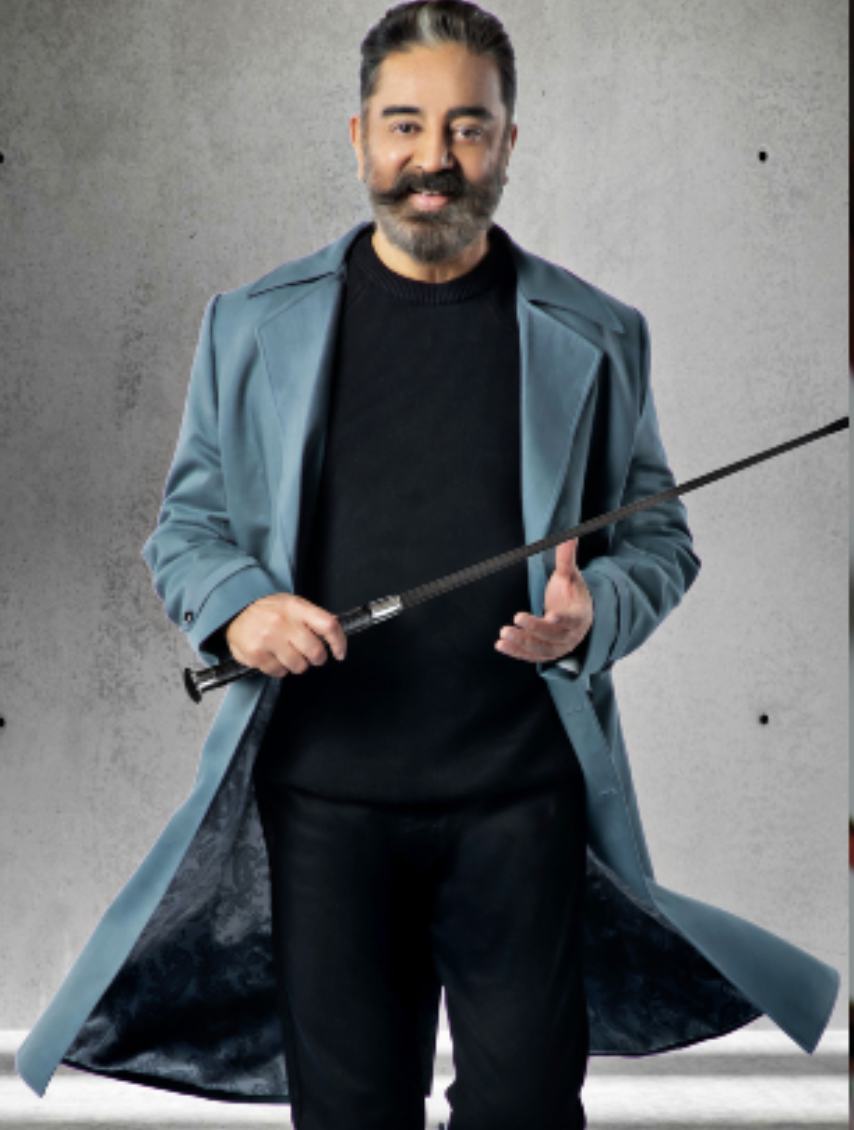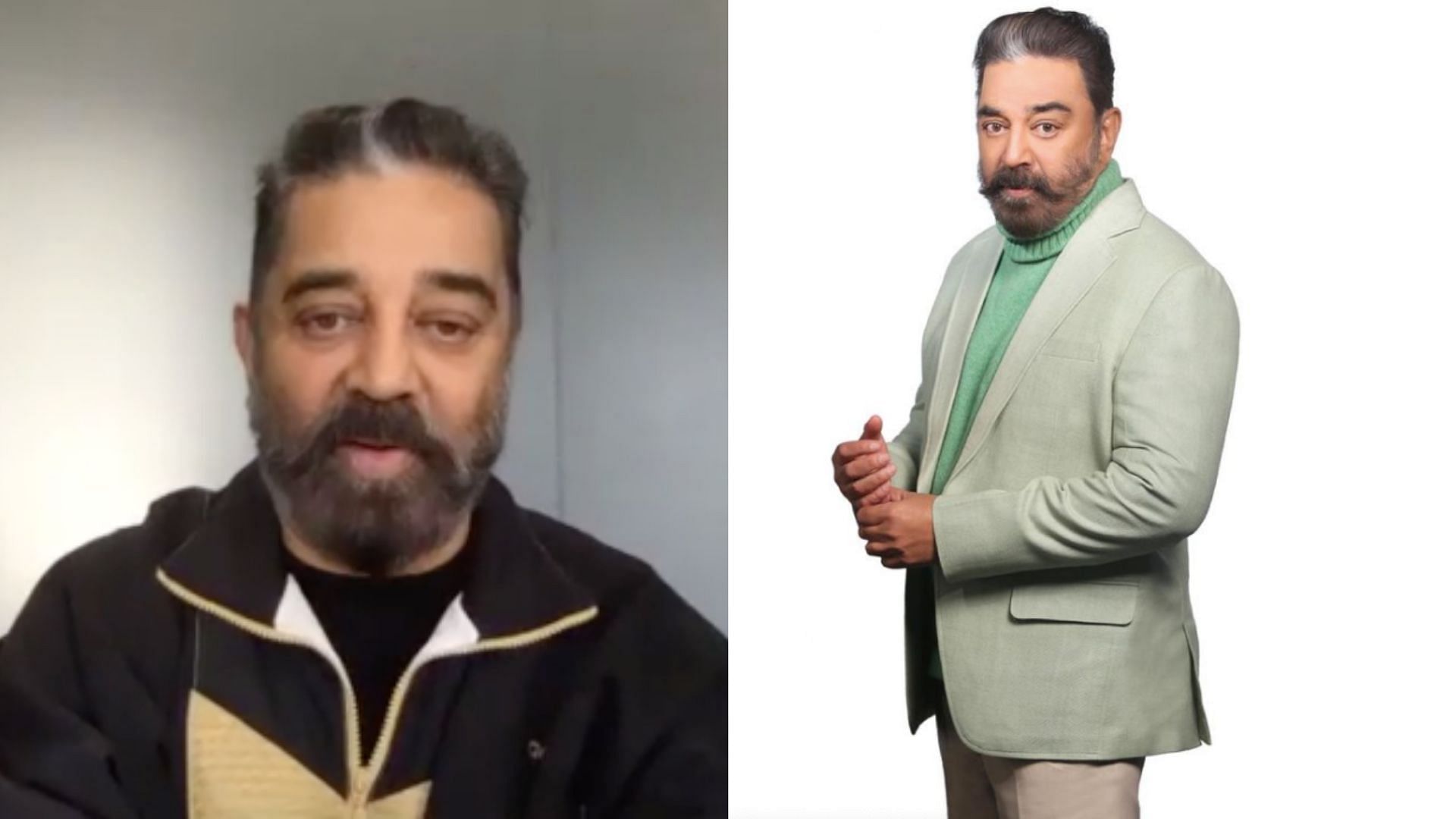Source: MW COVER STORY
For a restless artistic spirit like Kamal Haasan, loyalty to a single muse is secondary.
His glass is overflowing, but that does not stop him from seeking more creative venues. He travels, writes poetry and song lyrics, makes movies (fasten your seat belts for Vikram, a fist and fury action romp coming this summer), sings and dances, plays Bigg Boss on TV, busies himself as a leader of his political party, Makkal Needhi Maiam (MNM), and then some. And that “some” is the 2021 collection of his clothing line, KH House of Khaddar, and KH Memoir, a fragrance line that he recently unveiled in Chicago.
The intention is to showcase khadi as a chic, cool, and modern fabric to appeal to young consumers, while also supporting the dwindling business of handloom weavers—something Haasan learnt from his Gandhian lawyer father, who had supported khadi since the pre-Independence times.
Haasan fits the part of a fashion label owner quite well. He has been a style icon in south India for a long time. Like all his creative pursuits, he has been fearless in experimenting with colours, textures, fabrics, designs, and cuts. Give him crazy, give him weird, give him gorgeous, he plays the perfect clothes horse in his movies, and outside of it. His interests in fashion and styling came through the way of costumes, as a young classical Bharatanatyam dancer, on and off-screen. He’s played characters whose costumes and make-up have been consistently path-breaking in Indian cinema. At school, he tried the Beatles’ look from album covers donning pencil pants and boots and tight shirts, silks, and jewels for his dance performances and innovative fabrics and designs for his movies, setting fashion milestones effortlessly.
He kept it real as the village idiot with a heart in Pathinaru Vayathinile (1977), clad in a loincloth and a grubby veshti—a time when matinee idols in Tamil cinema traded image consciousness for authenticity. The press went crazy over a dashing, urbane hero dropping his city slicker glad rags to play a country bumpkin. Sliding into groin-hugging tights, a sparkly velvet cloak, and embroidered cape, he danced like an anachronistic Romeo with Sridevi in the song Vadivelan Manasu Vachan from Thayillamal Nannilai (1979). “As we were transitioning from black and white cinema to colour, the colour compass could be a bit off at times, not Rembrandtesque,” he laughs at the memory. Still, the innovation and experiments with fashion and styling continued.
He swung around with an ominous edge in a beret, sneaky baseball caps, big collars, coloured vests and leather jackets and flared pants to play the role of a killer in Sigappu Rojakkal (1978). “I wanted to channel the menacing style of Ted Bundy,” he recalls. The result could have teetered towards an American psycho in Madras, but it worked. Within a week of the movie’s release, the thambis began strutting on the streets with long hair and droopy moustaches, in coloured vests, big-collared shirts and pants with flares that rivalled the pavadai of the girls.
He recalls that since he “played the parts of bad boys early on” in his career, he was untouched by the restrictions of keeping up with a traditional hero’s image. Given the iconic Hollywood bad boys and their impressionable styles, Haasan remembers being fascinated by “villains on screen who were always very stylish”. Stars like Gene Kelly, Douglas Fairbanks, and Robert Redford also made an impression. However, for Haasan, his late eldest brother, Chandrahasan, remains a personal style icon.
Before the advent of satellite television and the Internet, styling and chasing fashion was difficult. “Our access to styles and images were also through magazines and travels, and on my first ever trip abroad to Singapore, I shopped for stuff that had popped out of style and movie magazines,” he says.
In 1980, Haasan slayed it in Sakalakala Vallavan with shiny disco gold pants so tight that they could cut off blood circulation to the legs, a sparkly top, wicked biker chains, and leather jackets.
If Haasan ever admits to having a fashion party, it was for the Tamil Bondesque caper Vikram (1986). He concedes that it was a milestone in his fashion journey. He had collaborated with the ‘Raja of Filmi Razzmatazz’, the Bombay-based Xerxes Bhathena, the designer for Bollywood movie stars. He recalls Amjad Khan looking like a stoned Chinese Ming emperor in trailing moustaches and silk robes; Dimple Kapadia like an exotic princess in copper-coloured flowing gowns, and him in slick pants and jackets. “I had limited resources and access to material but had a creative romp designing for the film,” he recalls. In those days, “Bombay set fashion and style standards much more than Delhi,” he says. In the pursuit of his interests, he even travelled to the US and Europe to train in costume and styling.
Given his passion for style and fashion, it only seems natural that Haasan would one day launch his own fashion line. And now that he has established KH House of Khaddar, he speaks to us about his new label, personal style, khadi, and much more.
You are an inimitable brand yourself and have been a fashion style icon. What led you to collaborate with designer Amritha Ram to create a brand rich in history at this point in your career?
Amritha Ram and I spoke the same cinematic and sartorial language when we started working in the same industry. We became friends, and now, we are a fashion team. Fashion-wise, I followed extra mural laws learned by acquired experiences and understanding. I was worried that I might not fit well in a crowd educated in fashion and design like Amritha, who trained at the New York Fashion Institute of Technology. But as we talked, my gestures and ideas were supplemented with her fashion vocabulary. And khaddar (khadi in Tamil) seemed the perfect fit.
The KH House of Khaddar clothing line seems to be about experimenting, and the results come as a breath of much-needed, fresh air to the fabric. Are you the force behind your designer to constantly ensure the collections uphold the ethos of maintaining brand KH’s heritage, while also keeping it relevant to current world trends?
It’s a fine balance between not forcing your ideas and highlighting the ones that work well. That’s why the team works, and our collective remains a highly creative one. I think the experience will teach us more as we experiment and see how the ideas work in the real world. A conversation about the commercial aspects led us to develop fashion lines that we think will work. Our first collection is not pompous. It answers questions like ‘What can khadi do for style and fashion?’ It can do all that linen can, and much more. When we launched our label, our collection was showcased in Chicago in fall 2021. It is the city of winds, and the temperatures were icy, but I could walk down in a three-piece khadi outfit, and its warmth held me up. I believe that khadi is a textile for all seasons.
When was the first time you wore a khadi garment? Weren’t your father and family admirers of Gandhi?
Like most boys, the first time I wore khadi was when I nicked my father’s khaddar (in Tamil) coat. It was oversized, as my father would often wear loose garments, and this one fell to the ground from my tiny shoulders. I resembled an Arab in that flowing coat, and as I strutted, my mother tut-tutted that my costume play had ruined her meticulous ironing of the starched coat. When I grew up, I told my father that he wore khadi as a mark of protest against British colonialism and to support Indian weavers and textiles who lost jobs, but after Independence, I didn’t have to. He laughed and said, “It’s not just a textile; it’s a symbol of strength”. And much later, as he lay in the hospital during his last days, I visited him and asked him if I could buy him a silk veshti for the Deepavali festival. He mocked me, saying, “Oh, you can buy hundreds of silks, can’t you now? There are hundreds of fathers in the world who can’t afford that. Machine-made textiles and expensive silks can’t win me over. I will always wear khadi as a symbol of an egalitarian textile and proudly so”.
What’s the one Indian fashion habit you hate?
To blindly imitate the West. That’s a fashion habit I’d like to kick. Indian dressing and design are based on comfort, and it’s practical, suited to our weather and culture. I remember I was so fascinated by the Roman toga during my early teens that I started draping one at home, much to the chagrin of my mother. She then banned me from strutting around in the toga because, you know, a naughty gust of wind could make it quite embarrassing.
Indian politicians prefer white. You seem to be turning that statement on the head and appearing in casual trousers and shirts for your public campaigns. Will your sartorial statement as a politician switch to khaddar in future?
I hate cliches, and I literally hate wearing hypocrisy. A white garment doesn’t make a man as pure as a lily, and I don’t want to create a false symbol. I come from an industry that creates characters and costumes for personalities, and I know how false they are and how temporary they are. When I’m reaching out to and connecting with people, I want to be what I am. I represent this generation, and I will be the way I am because that’s how they would like me to be. What is special is that even during the party campaigning time, I wear a lot of khadi. However, I noticed that most people didn’t realise that it was khadi. I think that’s when the khadi experiment started. We use sustainable dyes, without harmful chemicals, to produce the desired tones and bright colours in khadi. The sustainable path is the path of the future.
Tell us a bit about KH Memoire. How is it different from other brands in the same space?
I’m a great fan of perfumes, and though modern society believes that perfumes are a very western concept, I’d say it’s a very eastern idea. In medieval times, India exported perfumes to Rome and the Middle East. Indian fragrances and perfumes made from sandalwood offered a combination that was both exotic and heady. I am proud of that heritage, and I am a collector of perfumes. I always wanted to create perfumes, and when somebody approached me, it was a dream come true for me. This perfume came from my heart as I did not pretend to know the technique of making perfume, but I shared my dream of what I would like a perfume created by me to be. A perfume is like a costume and does not stay the same, for it smells and emits fragrance differently for each occasion.



Leave a comment
This site is protected by hCaptcha and the hCaptcha Privacy Policy and Terms of Service apply.